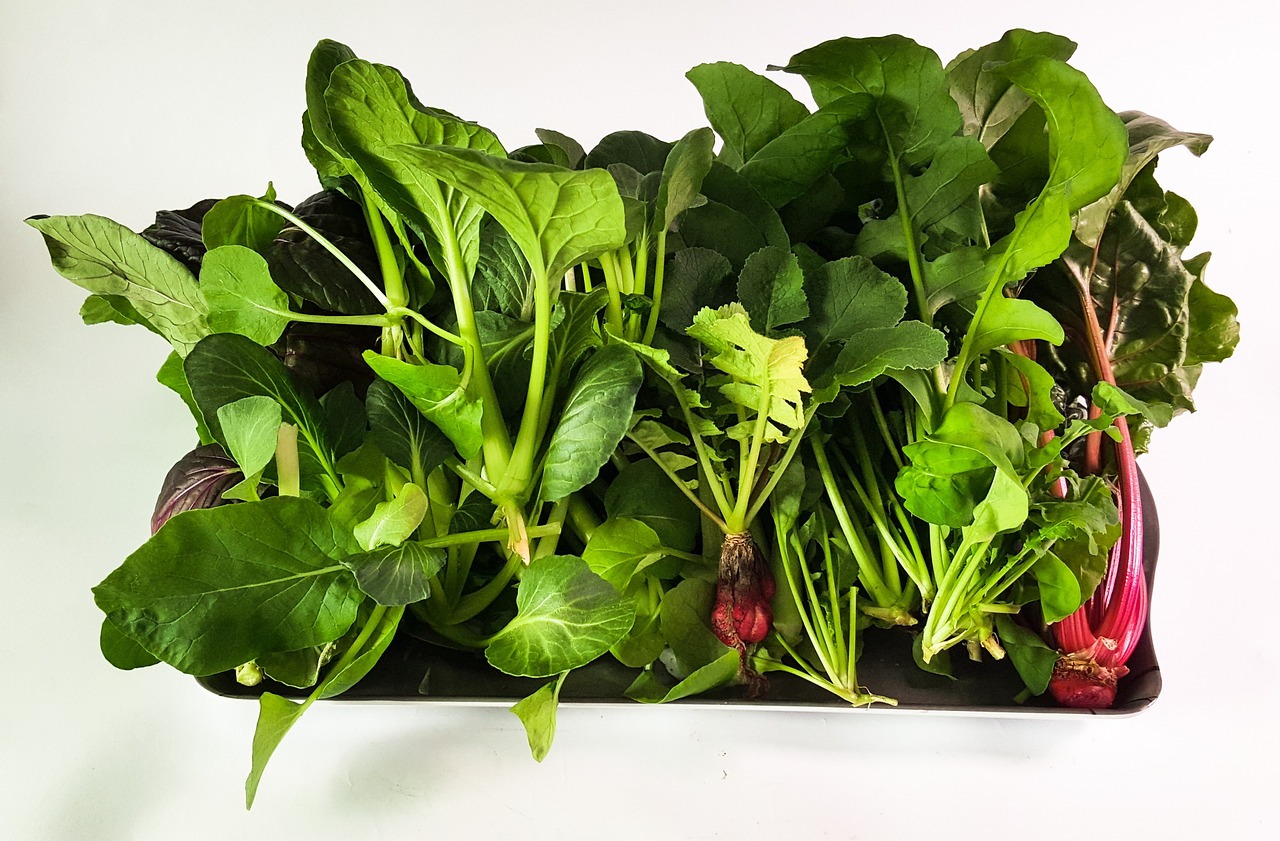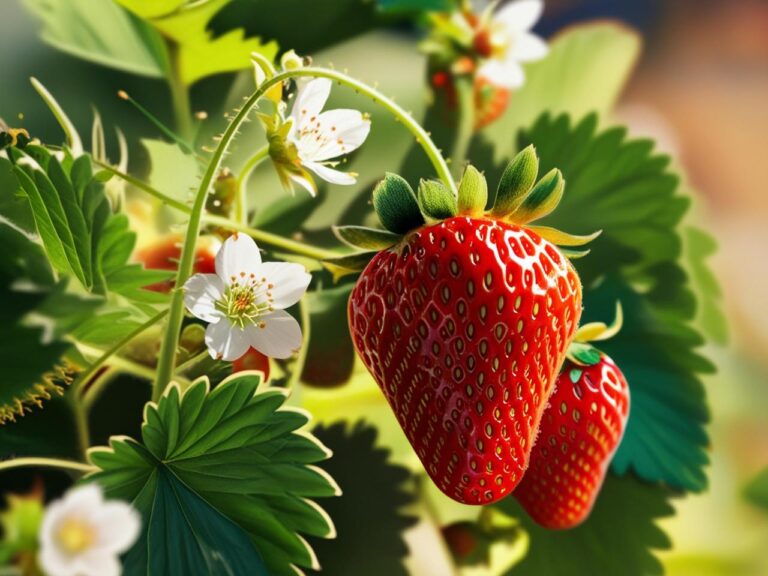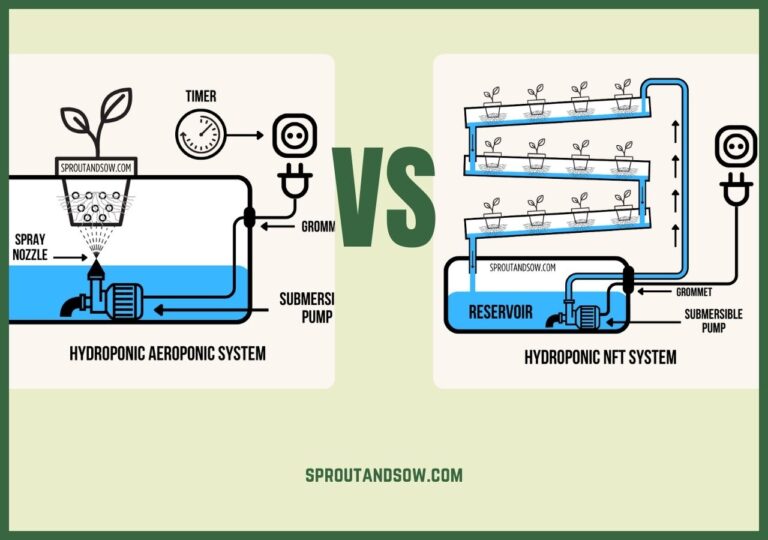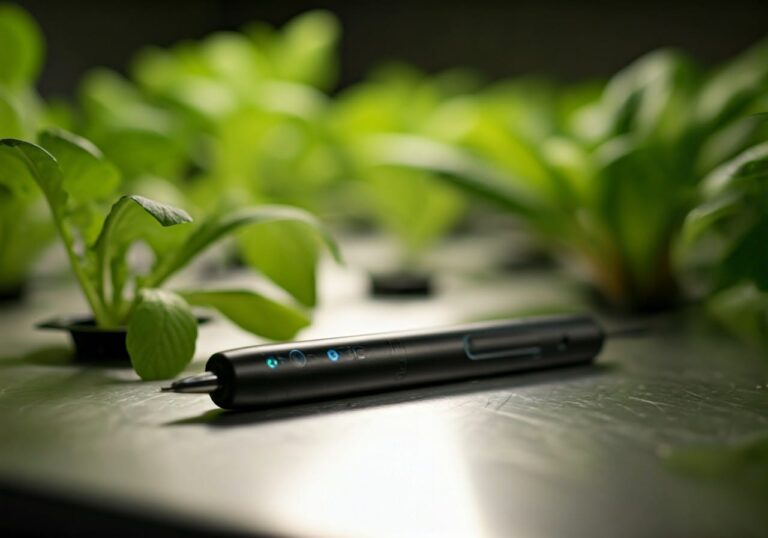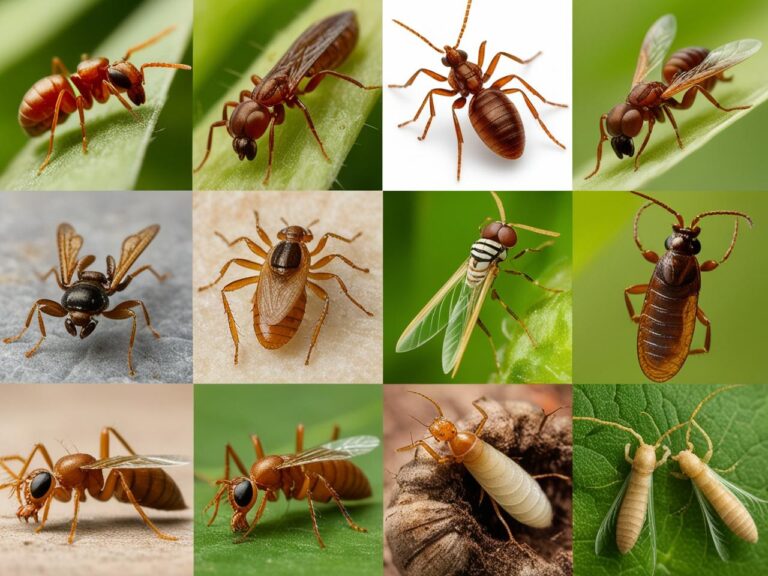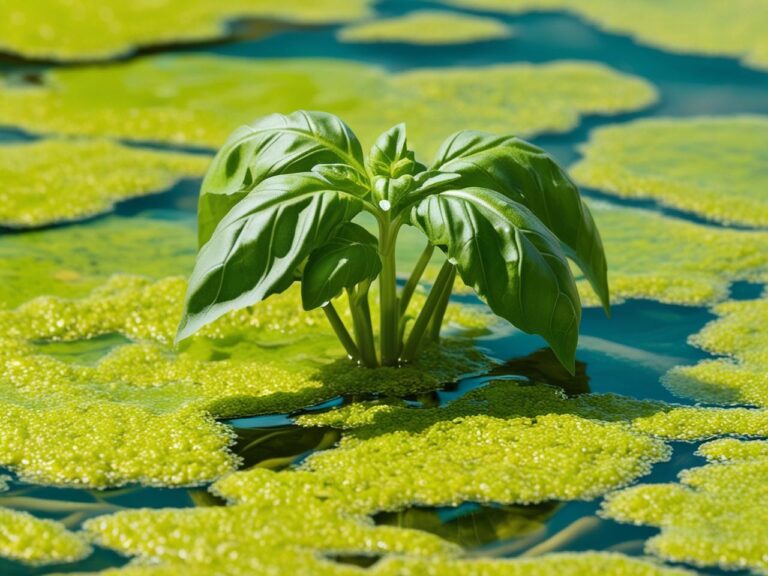The Complete Guide to Hydroponics for Beginners (2024): Start Growing Today!
Hydroponics has taken the gardening world by storm, and it’s no wonder why! Did you know that hydroponic systems can produce plants up to 30% faster than traditional soil methods? That’s right! With the ability to control nutrient levels and eliminate soil borne pests, hydroponics offers a unique and efficient way to grow your favorite plants. Whether you’re looking to grow fresh herbs for your kitchen or vibrant flowers for your home, hydroponics opens the door to endless possibilities. In this complete hydroponics for beginners guide, we’ll explore everything you need to know to get started on your hydroponic journey. From understanding the various systems to selecting the right plants and managing nutrients, you’ll be well-equipped to dive into this exciting world of soil-free gardening!
Take a listen to our podcast: The Complete Guide to Hydroponics for Beginners
1. What is Hydroponics?
Hydroponics is like a secret garden where soil takes a back seat and water takes the wheel. In simple terms, hydroponics is a method of growing plants without soil. Instead, it uses a nutrient-rich water solution that directly feeds the plants. Sounds magical, right? This method not only boosts plant growth but also conserves water, a win-win for anyone wanting to garden sustainably!
Now, let’s take a quick stroll down memory lane. The concept of hydroponics isn’t as new as you might think! The ancient Babylonians cultivated plants in hanging gardens without soil, and many cultures have used variations of soil-less growing for centuries. Fast forward to today, and we have high-tech systems that can grow anything from lettuce to strawberries right in your home. Pretty cool, huh?
Water is the lifeline of any hydroponic system, while oxygen is crucial for healthy root development. Proper oxygenation in the root zone is essential to prevent issues like root rot, making aeration a necessary feature in most hydroponic systems.
One of the best parts about hydroponics is how versatile it is. You can set up a simple system using just a few containers and some water, or go all out with advanced setups that use pumps, grow lights, and nutrient solutions. This flexibility makes it perfect for anyone, whether you’re a total novice or a seasoned gardener. So, if you’ve ever thought about trying your hand at gardening but were put off by the whole “keeping plants alive in dirt” thing, hydroponics is your golden ticket to a thriving garden.
2. Benefits of Hydroponic Gardening
Let’s chat about why hydroponics is all the rage. First off, it’s space efficient! You don’t need a sprawling backyard to get started; even a small apartment can host a flourishing hydroponic garden. Imagine growing fresh basil or cherry tomatoes right in your kitchen, how convenient is that? Plus, you can stack systems vertically to maximize your space.
Another perk? Water conservation! Hydroponics uses up to 90% less water than traditional gardening because the water is recirculated. No more dumping gallons of water on your plants only to watch most of it evaporate into thin air. Instead, the roots take what they need, and the rest goes back into the system. It’s like having a personal watering assistant that never forgets to hydrate your plants!
Then there’s the speed of growth. Plants can grow 20-30% faster in hydroponic systems compared to their soil-bound counterparts, due to the direct nutrient absorption. This means you’ll be enjoying fresh produce in record time! And let’s not forget about the year-round growing potential. With the right setup, you can grow plants in any season, regardless of what Mother Nature has planned outside.
As you’re getting started, it’s important to know about potential pitfalls. Check out our guide on Common Hydroponic Mistakes Beginners Make and How to Avoid Them to help you avoid some common challenges right from the start.
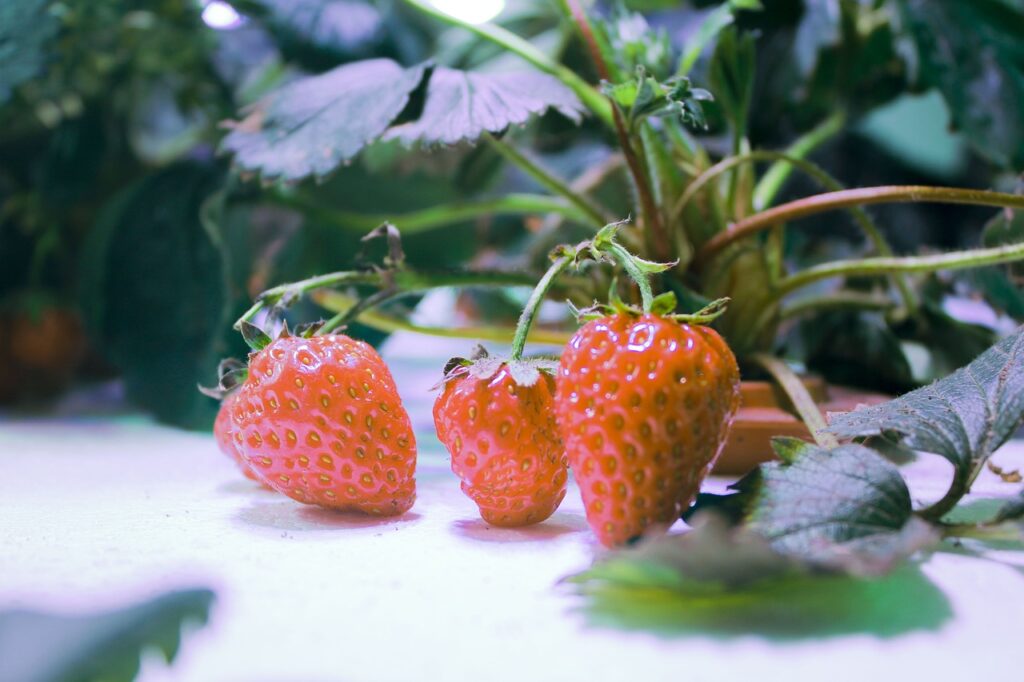
3. Types of Hydroponic Systems
Now, let’s dive into the different types of hydroponic systems you can use. Each system has its own unique approach to delivering nutrients and support to plants, so it’s important to choose one that fits your needs.
Recommended Product: Not feeling DIY? Want to jump right in? Contains everything you need to get up and running quickly. Complete Indoor DWC Grow Kit
- Deep Water Culture (DWC): Picture this: your plants’ roots are submerged in a nutrient-rich water solution, with an air pump bubbling away to provide oxygen. That’s DWC! It’s simple and effective, making it a favorite for beginners. Just remember, the roots need to breathe, so keeping that oxygen flowing is key!
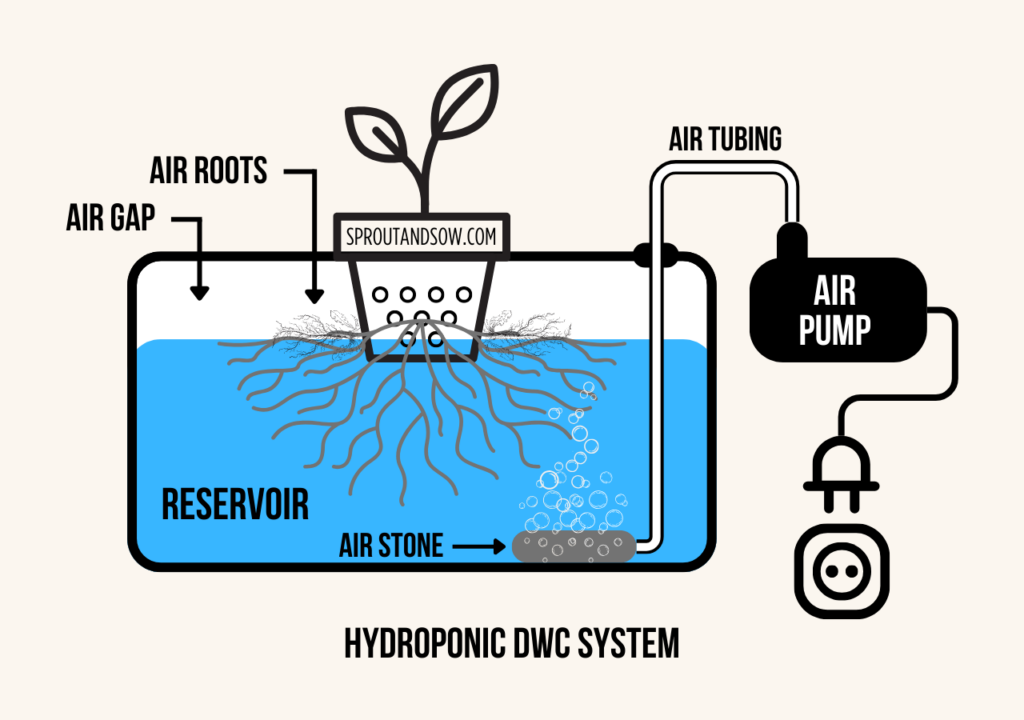
- Nutrient Film Technique (NFT): This system involves a thin film of nutrient solution running over the roots of the plants. The roots get their nutrients as they hang in the solution while the excess drains back into the reservoir. NFT is great for leafy greens and herbs, but it requires a bit more monitoring to ensure the film isn’t too thick or too thin.
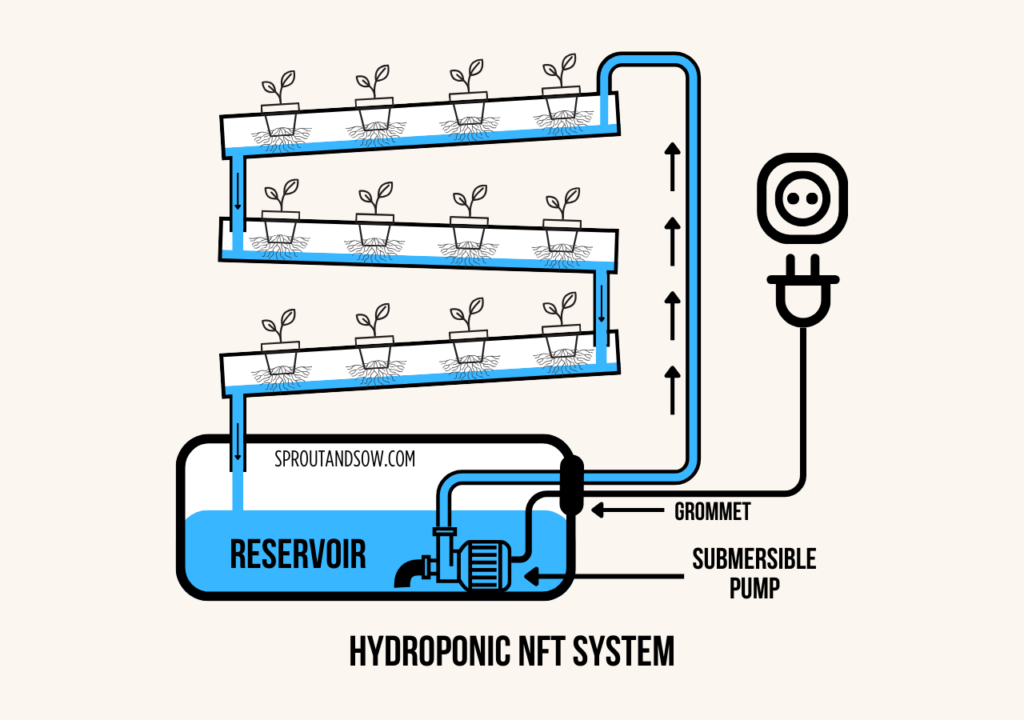
- Ebb and Flow (Flood and Drain): In this system, plants are temporarily flooded with nutrient solution, and then the water drains back into the reservoir. It’s like a mini spa day for your plants! This method works well for a variety of plants, but you need to pay attention to timing to avoid over-saturation.
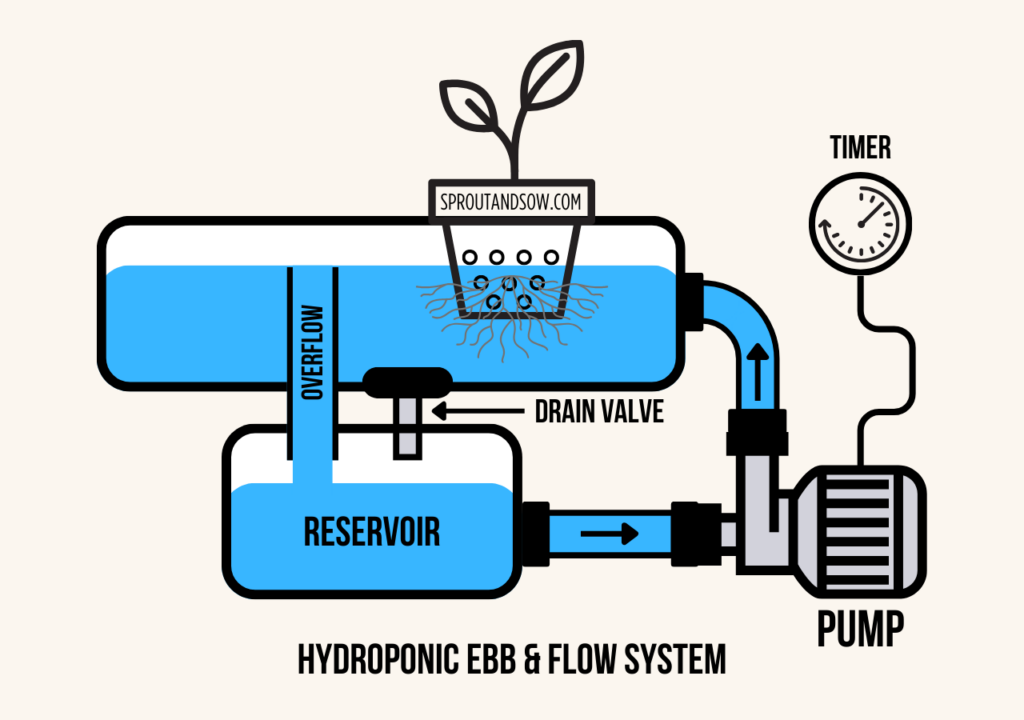
- Kratky Method: No pumps or electricity, plants sit in water and nutrients. Ideal for leafy greens. Simplest system, low-cost. Highly recommended for beginners and it’s what I like to use.
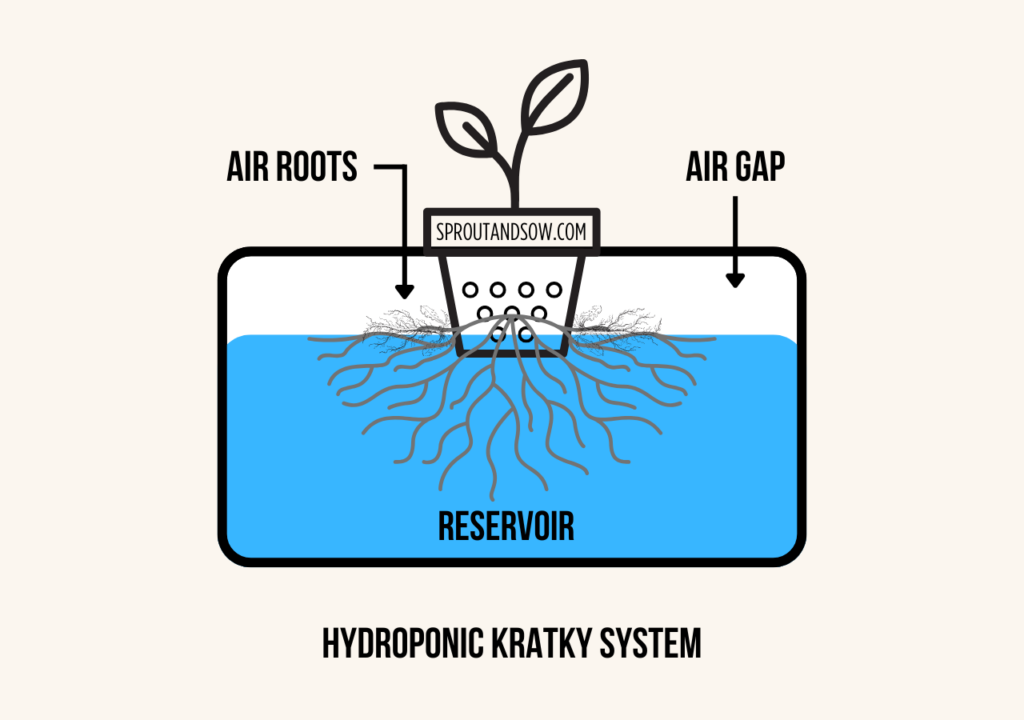
- Aeroponics: If you’re looking for something high tech, aeroponics might be your jam. In this system, the roots are suspended in the air and regularly misted with a nutrient solution. This provides maximum oxygen exposure and allows for incredible growth rates. However, it does require more setup and monitoring.
Related: How Aeroponic Towers Work
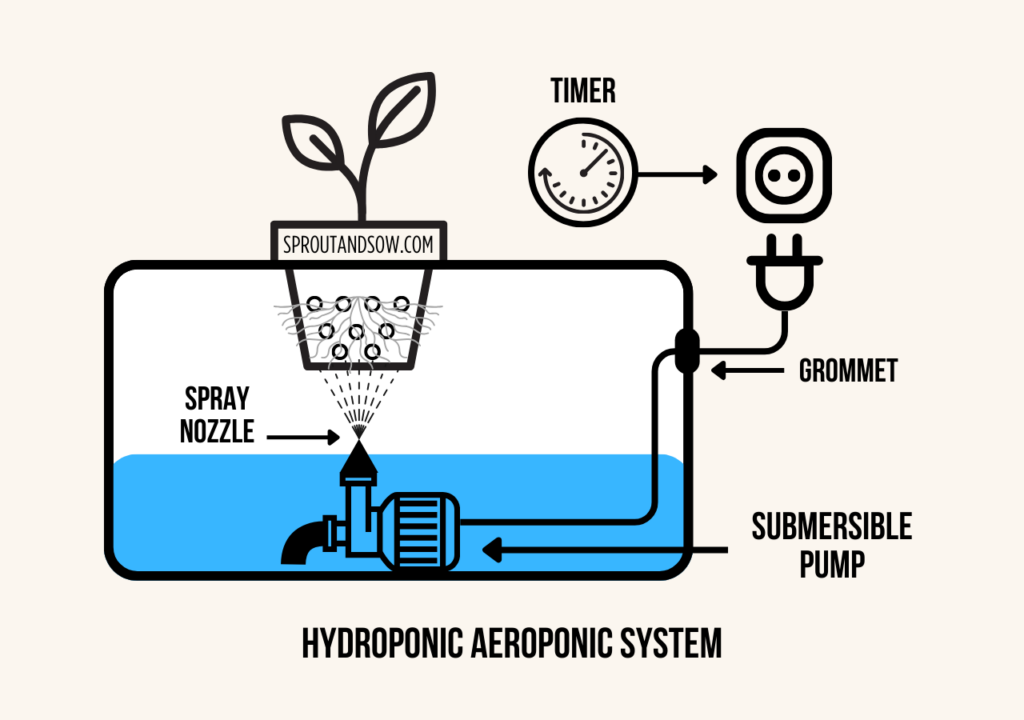
- Wick System: The simplest of them all, the wick system uses a wick to draw nutrient solution from a reservoir to the plants. It’s low-maintenance and great for beginners, but it’s not as efficient for larger plants or faster-growing crops.
Choosing the right system depends on your goals, space, and how much time you want to invest in maintenance. Each has its quirks, but they all share the common goal of producing happy, healthy plants!
Choosing the Right Hydroponic System for Beginners
Selecting a hydroponic system depends on factors such as:
- Space considerations: Whether indoors or outdoors, choose a location with controlled temperatures and space for lighting equipment if needed. Temperature stability is key for a healthy hydroponic setup. Smaller systems like the wick system or DWC and Kratky are ideal for compact spaces.
- Essential Components for Hydroponics: Every hydroponic system requires a few key components: a reservoir, a pump (for most systems), air stones (for aeration), and containers for plants. Nutrient solutions and proper lighting are also essential.
- Budget constraints: Wick and DWC systems are more affordable for beginners, while aeroponics is usually pricier. Lighting fixtures cost money and use electricity, while growing outdoors is basically free.
- Lighting Options for Indoor Hydroponics: For indoor setups, lighting replicates sunlight. LED lights are highly recommended due to their energy efficiency and ability to provide full-spectrum light, while fluorescent and HID lights are also viable choices.
- Maintenance level: Some systems require daily attention, while others are more hands-off.
4. Setting Up Your First Hydroponic System
Essential Components for Hydroponics
Every hydroponic system requires a few key components: a reservoir, a pump (for most systems), air stones (for aeration), and containers for plants. Nutrient solutions and proper lighting are also essential.
Choosing the Right Location
Whether indoors or outdoors, choose a location with controlled temperatures and space for lighting equipment if needed. Temperature stability is key for a healthy hydroponic setup.
Lighting Options for Indoor Hydroponics
For indoor setups, lighting replicates sunlight. LED lights are highly recommended due to their energy efficiency and ability to provide full-spectrum light, while fluorescent and HID lights are also viable choices.
5. Essential Supplies for Beginners
Alright, let’s get to the nitty-gritty! If you’re planning to set up a hydroponic system, you’ll need a few essential supplies. Here’s a handy checklist to get you started:
- Growing Containers: Whether you go for plastic bins, pots, or specialized hydroponic containers, make sure they can hold your plants and the nutrient solution.
- Reservoir: This is where your nutrient solution will live. It can be as simple as a bucket or as fancy as a specially designed tank. Just ensure it’s big enough for your system!
- Pump: For systems that require moving water, a good pump is crucial. It should be powerful enough to keep your solution circulating without burning out.
- Air Pump and Air Stones: If you’re using DWC or any system that requires oxygenation, you’ll need an air pump and air stones to keep the water oxygen rich.
- Grow Lights: If you’re gardening indoors or in low-light conditions, grow lights will be your best friends. LED or fluorescent lights work well, depending on your setup and budget.
- Hydroponic Nutrients: Look for nutrient solutions specifically formulated for hydroponics. They usually come in liquid form and provide everything your plants need.
- pH Testing Kit: Keeping an eye on your pH levels is crucial for plant health. A testing kit will help you monitor and adjust your nutrient solution.
- Net Pots: These pots allow plant roots to hang into the nutrient solution while providing support. They’re a must have for most hydroponic systems.
- Growing Medium: Depending on your system, you might need a medium like clay pellets, rock wool, or coconut coir to anchor your plants.
- Timer: For systems that require pumps or lights to be on for certain periods, a timer will make your life easier by automating everything.
When it comes to costs, the sky’s the limit, but you can definitely set up a basic system without breaking the bank. Just remember to do your research and invest in quality supplies, your plants will thank you!
Related: 10 Must-Have Tools for a Successful Hydroponic Garden
6. Hydroponics Lighting Explained
LED vs. Fluorescent vs. HID Lighting
LED lights are efficient, durable, and full-spectrum, making them popular for indoor hydroponics. Fluorescent lights work well for small setups, while HID lights are strong but require additional cooling.
How to Choose the Right Lighting
The best lighting depends on the plant’s needs, the grow area, and budget. Full-spectrum LEDs are typically a safe, versatile choice for beginners.
Adjusting Light for Different Plant Stages
Plants need different light intensities depending on their growth stage. Adjust light strength and distance for optimal growth in each stage, especially during flowering.
7. Choosing the Right Plants for Hydroponics
Now that you’re equipped with supplies, let’s talk plants! Not all plants are created equal when it comes to hydroponics. For beginners, it’s best to start with varieties that are easy to grow and adapt well to hydroponic systems.
- Lettuce: This leafy green is a hydroponic superstar! It grows quickly, requires minimal nutrients, and can be harvested multiple times. Plus, who doesn’t love a fresh salad?
- Herbs: Basil, mint, cilantro, and parsley are all fantastic options. They’re small, flavorful, and perfect for adding a fresh kick to your meals. Just be sure to give them plenty of light!
- Strawberries: If you’re feeling adventurous, why not try growing strawberries? They do require a bit more attention, but the reward of home-grown berries is totally worth it.
- Spinach: Another leafy green that thrives in hydroponic systems. Spinach grows quickly and is packed with nutrients, making it a great choice for health-conscious gardeners.
- Kale: This nutrient powerhouse is perfect for hydroponics. It can handle a bit of neglect, making it ideal for beginners who might not have a green thumb just yet.
Plants to Avoid
Avoid plants that require extensive root space, like large fruiting trees, or those highly sensitive to humidity fluctuations, as these can be challenging in a beginner system.
When selecting seeds or seedlings, look for varieties specifically labeled as suitable for hydroponics. And remember, it’s always a good idea to start small. As you gain experience, you can branch out to more challenging plants.
8. Managing Nutrients and pH Levels
Alright, let’s dive into the science of plant nutrition! One of the keys to successful hydroponics is understanding how to manage nutrients and pH levels. It might sound complicated, but I promise it’s easier than it seems.
Hydroponic nutrients come in concentrated forms, typically sold as liquid or powder. You’ll want to choose a balanced formula that includes the essential macro and micronutrients your plants need. Follow the instructions on the packaging to mix your nutrient solution, and don’t forget to monitor it regularly. Plants have varying nutrient needs depending on their growth stage, so adjust as necessary.
In a hydroponic system, nutrient solutions replace the nutrients plants usually find in soil. These solutions must be carefully balanced with the necessary minerals, including nitrogen, potassium, calcium, and trace elements essential for plant health.
Now, let’s talk pH. The pH level of your nutrient solution plays a massive role in nutrient absorption. Most plants thrive in a slightly acidic environment, with an ideal pH range of 5.5 to 6.5. You can easily test the pH using a testing kit or pH meter.
If your pH levels are off, don’t panic! Adjusting them is as simple as adding pH up or pH down solutions, which you can find at gardening stores. Just make small adjustments and give it time to settle before retesting.
Remember, keeping a close eye on your nutrient and pH levels will help your plants flourish. It might feel like a lot of work at first, but with a bit of practice, you’ll be a pro in no time!
Proper pH management is crucial for healthy growth. Learn more in our article on Understanding Hydroponic pH Levels and How to Manage Them for a deeper dive.
9. Troubleshooting Common Hydroponic Problems
Even the most seasoned gardeners face challenges now and then. Here are some common hydroponic issues and how to tackle them:
- Nutrient Deficiencies: If your plants are turning yellow or showing stunted growth, they might not be getting the nutrients they need. Check your nutrient solution and consider adjusting the concentrations or trying a different formula.
- Pests: Yup, pests can still invade your hydroponic paradise! Keep an eye out for aphids, spider mites, and fungus gnats. If you spot any unwelcome guests, use organic pest control methods or introduce beneficial insects to keep them at bay.
- Root Rot: This nasty issue occurs when roots sit in water for too long without oxygen. Make sure your system is adequately aerated and that your water levels are just right to prevent this.
- Poor Growth: If your plants aren’t growing as expected, check your light levels, nutrient concentrations, and pH. Sometimes, it’s just a matter of tweaking a few variables to get things back on track.
- Algae Growth: Algae loves warm, light conditions, so if you see green slime in your reservoir, it’s time to act! Cover your reservoir to block out light and consider adding a UV sterilizer to keep things clean.
Related: Common Hydroponic Mistakes Beginners Make and How to Avoid Them
Don’t let these challenges discourage you. Gardening is all about learning, and even the best gardeners have off days. With patience and a bit of troubleshooting, you’ll be back on track in no time!
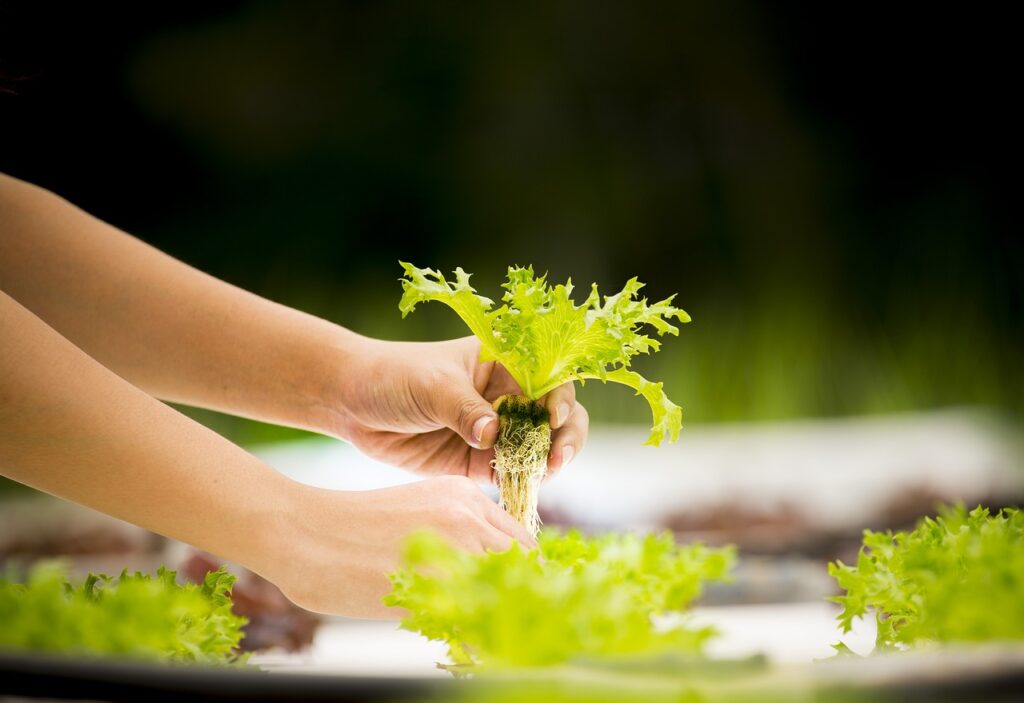
10. Tips for Successful Hydroponic Gardening
You’ve made it this far, and now it’s time for some expert tips to ensure your hydroponic success!
- Regular Monitoring: Check on your plants daily if possible. A little attention can go a long way in catching any issues before they escalate.
- Join Hydroponic Communities: Whether online or in person, connecting with fellow hydroponic gardeners can provide invaluable support. Share your experiences, ask questions, and learn from each other!
- Experiment and Have Fun: Don’t be afraid to try new things! Hydroponics is all about experimentation, so feel free to mix up your plants, systems, or nutrient solutions.
- Document Your Journey: Keep a gardening journal to track your plants’ growth, nutrient changes, and any issues you encounter. It’s a great way to learn from your successes and failures!
- Stay Patient: Gardening, hydroponic or not, requires patience. Not every plant will thrive, and that’s okay! Learn from your mistakes and celebrate your victories, no matter how small.
Hydroponics is a rewarding and exciting way to engage with gardening. Embrace the journey, and remember that every gardener started as a beginner!
FAQs
- Is hydroponics expensive to start?
No, beginners can start with budget-friendly systems like the wick or DWC system. - Can I grow any plant in hydroponics?
Some plants thrive better than others. Leafy greens and herbs are great for beginners. - How often should I change the water in my hydroponic system?
For most systems, changing water every two weeks is recommended. - Do hydroponic plants need soil at any stage?
No, hydroponic plants grow entirely without soil, relying on nutrient solutions. - Can I use tap water in my hydroponic system?
It depends on the water quality. Tap water can work if it’s properly pH adjusted. - How much light do hydroponic plants need?
Typically, plants need 12-16 hours of light daily, adjusted based on growth stage.
Conclusion
So, there you have it, the complete guide to hydroponics for beginners! We’ve explored everything from what hydroponics is to how to troubleshoot common problems. Remember, hydroponics offers a fantastic opportunity to grow your own fresh produce and flowers right at home, regardless of space or climate. I encourage you to dive in, set up your system, and start experimenting. Happy gardening!

